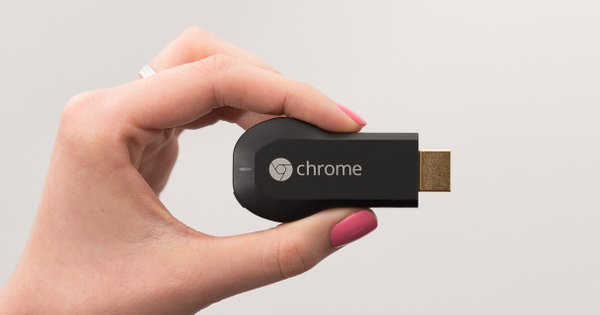It's no secret that the budget phone market is saturated. Still, interesting devices are sometimes released, with a good price-quality ratio. The Realme 7 Pro may be such a device. In any case, it has a number of nice features, such as an OLED screen.
Realme 7 Pro
MSRP from € 299,-Colors Blue
OS Android 10 (Real UI)
Screen 6.4 inch OLED (2400 x 1080, 60 Hz)
Processor Snapdragon 720G
RAM 8GB
Storage 128GB
Battery 4500 mAh
Camera 64, 8, 2 and 2 megapixels (rear), 32 megapixels (front)
Connectivity 4G (LTE), Bluetooth 5.1, Wi-Fi, GPS, NFC
Weight 182 grams
Other In-display fingerprint scanner, micro SD card slot
Website www.realme.com/eu/ 8 Score 80
- Pros
- OLED screen
- Main camera
- Battery and charging
- Negatives
- Plastic shell
- Other cameras
- 60 Hertz
Cheaper smartphones don't have to look cheap, of course. However, the Realme 7 Pro sends out mixed signals. The front may have a nice large OLED screen, but there is also a fairly thick chin. In addition, the casing is made of plastic that attracts fingerprints very quickly. In this segment that is not strange, but it is something you should be aware of. The back has been given a separate stripe, which creates a cool separating and futuristic effect when the light shines on it.
On the right we find the power button, while on the left are the volume buttons. This allows you to operate the device comfortably with one hand. At the bottom is a USB-C port, along with the beloved headphone jack and a single speaker. The headphone jack is especially important. If we look at the target group (people who do not have to or cannot buy the most expensive of the most expensive), we can imagine that they also have traditional headphones. The rectangular camera module has its sensors in an L-shape, while the front selfie camera is in the screen. There is also a neatly concealed in-display fingerprint scanner.


Great performance
The first impression is mostly positive, but how does the Realme 7 Pro function? Under the hood is a Qualcomm Snapdragon 720G processor, intended for midrange smartphones. That processor is also present in other smartphones within this segment and simply delivers excellent performance. Our review model has 8 GB of RAM and 128 GB of internal storage. Despite the fact that we are not dealing with new standards in the field of memory (this device contains UFS 2.1), we come to the conclusion that the Realme 7 Pro delivers excellent performance for daily use. Calling, e-mailing and WhatsApping is all no problem.

You can quickly switch between apps, open large files and finely scroll through all kinds of website pages, without the system hiccups. You can run into problems when you want to play games. Graphically heavier games, such as PUBG Mobile, do not run optimally, but are still playable fortunately. Fortunately, less heavy titles do not pose any problems. The battery, with a capacity of 4500 mAh, can be charged very quickly thanks to 65-watt fast charging. It takes about forty minutes to fully charge the device. And with relatively heavy use (as in: constant emailing, checking socials and reading news), that battery lasts for a day and a half or sometimes two days. That is more than fine at this price point and gives the smartphone a lot of value.
The Realme 7 Pro probably has one of the best displays at the moment, if we look purely at competing models. The super OLED screen is 6.4 inches and has a maximum resolution of 2400 by 1080 pixels. The maximum brightness is 600 nits, so you can still see what you're doing in well-lit environments. We do not often see smartphones at this price point equipped with an OLED screen, so that is a big advantage. OLED screens have a much nicer color reproduction, while black is really black and white is really white. The only drawback is that there is only a 60 Hertz screen refresh, while many competitors - and even their own predecessor - have 90 or even 120 Hertz.


Four camera sensors
There are four camera sensors in the rectangular camera module on the back. The main sensor has 64 megapixels, the ultrawide sensor has eight megapixels and the depth sensor has two megapixels. The fourth sensor also has two megapixels and is intended for macro photography. You shoot videos at maximum in 4k at 30 frames per second (fps), 1080p at 120 fps or 720p at 960 fps. The selfie camera on the front shoots pictures in a maximum of 32 megapixels and makes videos in 1080p at 30 fps. In any case, on paper, the Realme 7 Pro is not inferior to other devices in this segment. What you could miss is a telephoto lens, which is on its predecessor.
In general, the photo quality is of a good level. We are mainly talking about photos taken with the main sensor. The device captures a lot of detail and can display colors lifelike in many cases. You may notice some saturation in the colors at times, but fortunately it is not an exaggerated effect. Unfortunately, the other lenses do not offer the same quality. For example, the ultrawide camera quickly reaches its limits, so that you quickly come across photos that are somewhat grainy and less colorful. Many details are also missing. Zooming in is not recommended, because this is done completely digitally (due to the lack of a telephoto lens). Photos taken during the day are the best quality photos.
When you are busy in the evening or in a somewhat dark environment, you will notice how quickly the quality plummets. On the phone itself it still looks neat, but on a computer screen you notice that this is not the strongest quality of the Realme 7 Pro. The macro camera is another part that surprises. You can take beautiful close-up images of all kinds of objects, which are captured colorfully and sharply. The latter also applies to the selfie camera. Photos you take are sharp and colorful, but turn off the 'enhancements'. Then you notice that the front camera can handle the one in front of the camera much better.



Software and other features
Despite the fact that Android 11 has been available for months, many devices are still being released with Android 10 on board. We also see that with the Realme 7 Pro. That's not a big problem, but it's always a big advantage if you have the most recent software on your phone - that seems obvious to us. On top of Android, however, Realme provides its own software shell, which is similar to that of other Chinese manufacturers. In this case you will have to deal with the Realme UI, version 1.0. This system is based on the ColorOS from Oppo (a sister company of Realme), where personalization is high on the agenda.
In many cases you can decide for yourself what the software of your smartphone looks like. For example, you can adjust the icons of apps, change the layout of the quick menu and, for example, add or remove an app drawer. If you bring the device into your home, be sure to take the time to set everything up to your own liking, because there is a lot that is possible. Also nice to see is the dark mode, which makes all white system elements black. That is not only calmer for the eyes (both during the day and in the evening), but also better for the battery. Furthermore, it is cool to see that Realme also offers experimental features. This way you can activate smooth scrolling, so that content moves much more smoothly over the image. It simulates a screen with a higher refresh rate, but in this case it is controlled by software.
Meanwhile, Realme is working on the Android 11 upgrade, so it's coming anyway. You should not expect much in terms of security updates, since at the time of writing the most recent patch is from September 5, 2020. So there is still profit to be made.
Another important part of the Realme 7 Pro is the audio. At the beginning of the review it says that there is a single speaker at the bottom and that is correct. But there is also a speaker in the earpiece at the top, so you can play stereo sound. That is in principle fine if you do not expect too much from the sound reproduction. The device is also too thin for really good audio. You can also choose to connect headphones or play music via Bluetooth. There is support for aac, aptX HD and ldac, so you can use all kinds of wireless speakers and headsets from different sources and get the most out of them. Fortunately, the sound played through headphones – wireless or wired – sounds full, warm and detailed.



Realme 7 Pro – conclusion
As mentioned, this part of the smartphone market is quite busy. Within the segment of devices under 300 euros, the suggested retail price is 299.99 euros, there are more than enough options. The Realme 7 Pro could be a good option for you if you want a phone with an OLED screen, a long battery life (and a battery that charges quickly) and a good main camera that can handle all kinds of situations. In addition, the headphones are a very nice addition. It is also good to see that there is a micro-SD card slot and good to know that the in-display fingerprint scanner works nicely.
It is a pity to see that the device does not have a telephoto lens and does not offer a high refresh rate. If you are looking for a comparable device, you can also take a look at the regular version of the Realme 7, which does offer a higher refresh rate. Otherwise, for example, the Xiaomi Mi 10T Lite can be a good choice, which is also able to offer a lot for a price below 300 euros. That device also has its own drawbacks, of course, as you can read in the review, but there is a somewhat faster processor.
If you don't think the regular version of the Realme 7 is good enough and you don't want to make too many concessions with the Xiaomi Mi 10T Lite, you can still consider the OnePlus Nord. This device is slightly more expensive than the Realme 7 Pro, but also offers an OLED screen and excellent software. However, the cameras are not your thing and the battery is also somewhat smaller, but that device does have a nice OLED screen and a nice faster processor in the form of the Snapdragon 765G.

